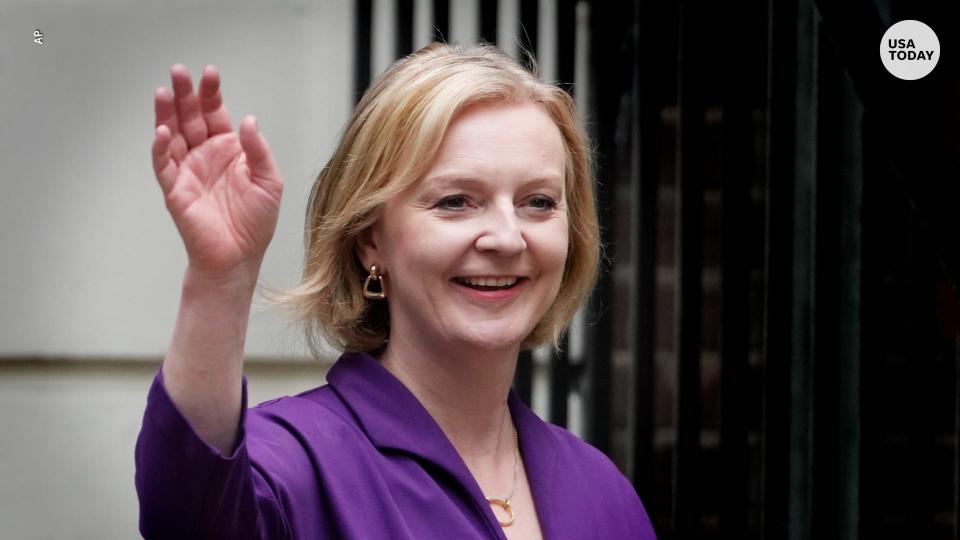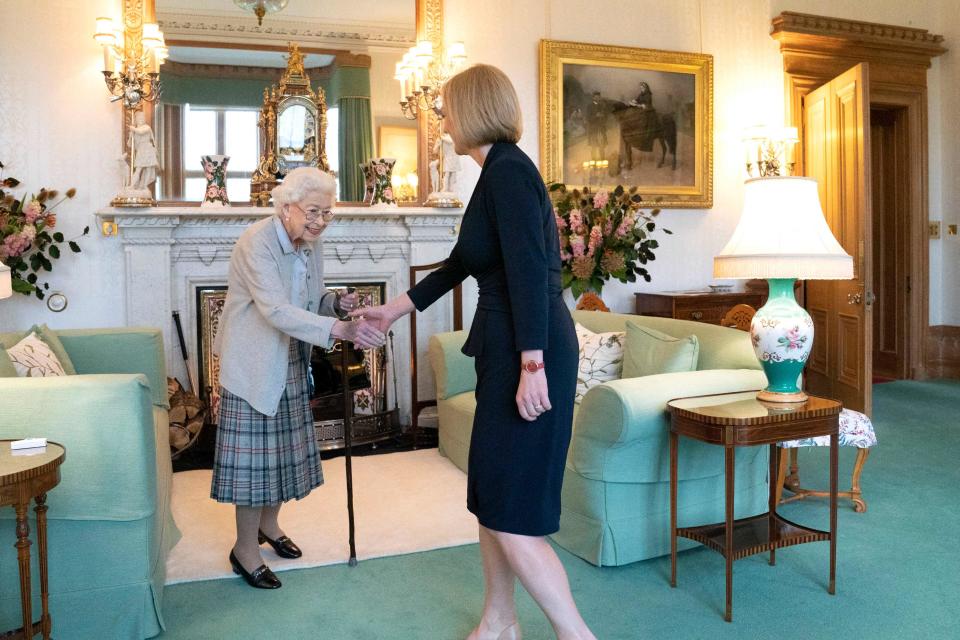Liz Truss is the third woman to lead the UK. No woman has been elected US president. Why?
- Oops!Something went wrong.Please try again later.
- Oops!Something went wrong.Please try again later.
- Oops!Something went wrong.Please try again later.
WASHINGTON – Liz Truss became the U.K.’s third female prime minister on Tuesday, an historic event that did not go unnoticed in the United States, which has yet to elect a woman as president.
What gives? Why do the Brits keep choosing women as their leaders while the U.S. keeps sticking with men?
The latest
Truss, 47, landed the job by beating Rishi Sunak, who was finance minister under former Prime Minister Boris Johnson, in a Conservative Party election contest.
Truss follows a trail blazed by Margaret Thatcher, who was prime minister from 1979 to 1990, and Theresa May, who held the office from 2016 to 2019.
Truss is outspoken, often seen as ideologically driven and frequently compared to Thatcher, the feisty Iron Lady who supported free markets and low taxes, developed a close friendship with Ronald Reagan and played a key role in ending the Cold War.

Top takeaways
Political analysts argue the U.K’s parliamentary system makes it easier for a woman to rise to the pinnacle of power than in the United States.
“Historically, countries with parliamentary systems of government have been more likely to elevate women to national leadership than countries with presidential systems,” said David Hopkins, a Boston College expert on presidential politics.
In Britain, voters elect a party, not a prime minister; the party that wins the most votes chooses the prime minister. A few years ago, the rules were changed so that grassroots members of the party, not lawmakers, could make the selection if a prime minister resigned or was forced from power outside of an election – as occurred with Truss, who won 81,326 votes to Sunak's 60,399 among Conservative Party members.
U.S. presidents, on the other hand, are chosen by the voters at large.
It’s much harder for a woman to be elected in a presidential system, where they face a slew of barriers, including building a national campaign infrastructure, raising money and enduring greater discrimination in media coverage, said Rainbow Murray, an expert on gender and diversity in politics and a professor at Queen Mary University of London.
Only one woman, Hillary Clinton, has come close to winning the U.S. presidency. Clinton won the Democratic nomination for president after a tough primary in 2016. She went on to win the popular vote during the general election but lost the Electoral College – and the presidency – to Donald Trump.
In the U.K., Thatcher is the only woman elected prime minister as a consequence of a general election – in other words, chosen indirectly by the public, as opposed to emerging from an internal party contest that is a feature of the British parliamentary system.
Both May and Truss won the top job after men were effectively forced from power. The ruling Conservative Party gave the role to May after David Cameron resigned in humiliation because he lost a controversial referendum on whether the U.K. should stay in the European Union. Truss's coronation this week by Conservative Party grassroots members followed the resignation of the scandal-plagued, gaffe-prone Johnson in July.
What they are saying
During a question-and-answer session in Parliament on Wednesday, May asked Truss why she thought all three of the female prime ministers have been Conservative. "It is quite extraordinary," Truss responded, before adding that the main opposition Labour Party "doesn't seem to have the ability to find a female leader or indeed a leader who doesn't come from North London," a reference to traditionally wealthier and well-heeled parts of the capital where voters have been characterized as holding more left-wing views on social and cultural issues.
Many Conservatives are more positively disposed toward a female leader because of the positive experience they had with Thatcher, who broke a barrier for female leadership, became the defining British leader of the past 50 years and won several elections for the Conservative Party, Murray said. Even so, "Thatcher was most definitely not a feminist,” Murray said. “A lot of the policies that she enacted did not help women. She surrounded herself by men in her Cabinet. She was generally not perceived as having done much as a leader, beyond the sort of symbolic aspect of having a woman in power, to advance women's rights."
“Margaret Thatcher was the most powerful prime minister of the modern era, alongside Winston Churchill, and so her example, I think, has been an inspiration to British women to follow,” said Nile Gardiner, director of the Margaret Thatcher Center for Freedom at the Heritage Foundation, a conservative think tank based in Washington. “Her leadership was a dramatic game-changer not only for the U.K. but also across Europe."
In the U.K., “the Conservative Party has always been, I think, very, very open to women leadership in recent decades, and we’re seeing that now once again with Liz Truss,” Gardiner said. “(The party) has never been supportive of identity politics or affirmative action or anything like that.”
“In the U.S., we have candidate-centered elections, and party influence seems to be dwindling," said Lauren Wright, a political scientist at Princeton University. "Trump was a key example of this. We are hyper-focused on the person running for office and their attributes.”
"Voters here have never seen a woman as president, which can translate into voters questioning whether women are electable,” said Christina Reynolds, a spokeswoman for EMILY’S List, a major national force for grooming female Democratic candidates. The organization works to elect woman at all levels of government to ensure “that we don't differentiate between ‘women candidates’ and 'candidates,’ that we are able to see examples of women in the highest levels of government.”
Another relevant factor in the U.K.: the instability of Conservative Party leadership. “The Tories have gone through four prime ministers, two men and two women, in the 12 years since they gained the parliamentary majority,” Hopkins said. “The more party leaders you go through, the more likely it is that some of them are women.”
What to expect
All three British female leaders have been Conservatives who used or sought to use their executive powers to govern from the ideological right, especially on economic issues.
In a 2020 speech when she was minister for women and equalities, Truss angered women's and minority rights groups when she dismissed race, discrimination and gender debates as "fashionable" topics that often amounted to little more than jumping on a "woke" bandwagon.
"Liz Truss's policies are likely to have quite a detrimental impact on women,” Murray said. “Because she is in favor of a very sort of individualist approach to policy direction, very neoliberal, and she is against economic distribution, which tends to favor women, a higher proportion of whom are on lower incomes.”
Gardiner, however, described Truss as "someone who will fight hard for British interests" and predicted she will be "forceful and decisive."
Want to know more? Here's what you missed
Liz Truss to be Britain's new prime minister, replacing Boris Johnson. Job one: tackle inflation.
What to know about Liz Truss: The U.K.'s new prime minister models herself on Margaret Thatcher

This article originally appeared on USA TODAY: Liz Truss is UK's third female leader. When will US follow suit?

